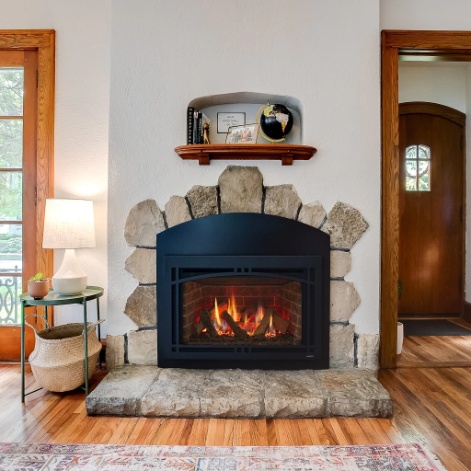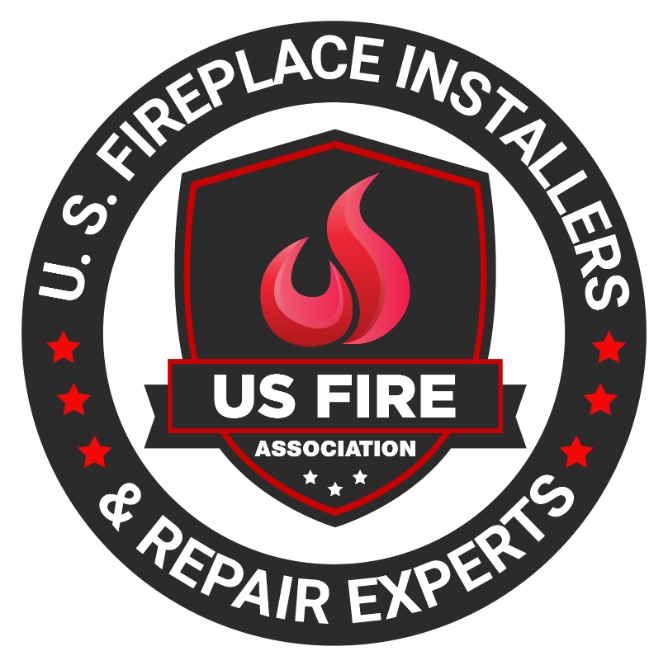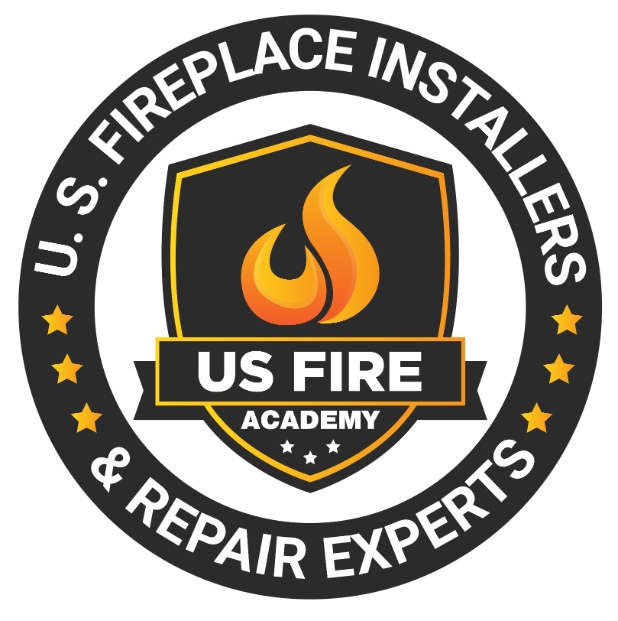Table of Contents
- 1 What Is an Electric Fireplace?
- 2 Why Would Someone Want to Mount an Electric Fireplace?
- 3 What Are the Steps to Mount an Electric Fireplace?
- 4 What Are Some Safety Precautions to Keep in Mind?
- 5 What Are the Benefits of Mounting an Electric Fireplace?
- 6 What Are Some Common Mistakes to Avoid When Mounting an Electric Fireplace?
- 7 Frequently Asked Questions
Looking to add warmth and ambiance to your home with an electric fireplace?
Mounting an electric fireplace can save space, create a modern look, and enhance your living space’s aesthetic.
In this article, we will discuss what an electric fireplace is, why you might want to mount one, the steps involved in mounting it, safety precautions to keep in mind, the benefits of mounting an electric fireplace, and common mistakes to avoid.
Whether you’re a seasoned DIYer or a beginner, this guide will help you successfully install an electric fireplace in your home.
What Is an Electric Fireplace?
An electric fireplace is a modern and energy-efficient heat source designed to enhance the aesthetics of a living room, bedroom, or den.
By mounting seamlessly on walls or standing elegantly within existing fireplaces, these electric fireplaces provide a realistic flame effect using LED technology.
The convenience of adjustable heat settings and a remote control feature allows for easy temperature regulation, eliminating the hassle of traditional wood-burning fireplaces.
The mesmerizing glow and cozy ambiance created by the flames make them a versatile and stylish addition to any interior space, bringing both warmth and charm to your home decor.
Why Would Someone Want to Mount an Electric Fireplace?
Mounting an electric fireplace offers a cost-effective and stylish home improvement solution that saves space while adding a cozy and modern touch to the room.
One of the key reasons individuals opt for mounting electric fireplaces is the space-saving aspect.
Unlike traditional fireplaces that require a chunk of floor space, electric fireplaces can be easily mounted on walls, freeing up valuable floor area.
This space-efficient design is particularly beneficial for smaller homes or rooms where maximizing space is essential.
Electric fireplaces bring a unique aesthetic enhancement to any space, serving as a focal point that elevates the overall interior design of the room with their modern and sleek appearance.
What Are the Steps to Mount an Electric Fireplace?
Mounting an electric fireplace involves a detailed step-by-step installation process that includes following the provided installation manual for guidance.
It is crucial to carefully read through the manual to understand the specific requirements of your electric fireplace model.
Start by locating the ideal spot for mounting, ensuring it is near a power outlet.
Next, assemble all the necessary tools such as a level, drill, screws, and screwdriver.
Measure and mark the placement of the mounting bracket accurately on the wall.
Secure the bracket in place following the manufacturer’s instructions.
Once the bracket is securely attached, carefully lift and hang the electric fireplace onto it.
Plug it in and enjoy the cozy ambiance!
Choose the Location
Selecting the optimal location for mounting an electric fireplace involves considering factors such as positioning, height, and clearance requirements to ensure safety and aesthetics.
Positioning the electric fireplace correctly is crucial for efficient heat distribution.
Placing it too high may lead to ineffective heating of the room, while positioning it too low can hinder visibility.
The ideal height for visibility and heat distribution is generally eye-level when seated.
In terms of safety, ensure there is ample clearance around the fireplace to prevent any obstructions.
Adhering to these guidelines not only enhances the functionality of the fireplace but also contributes to the overall ambiance of the space.
Gather Necessary Tools and Materials
Before beginning the installation, gather the essential tools and materials required, such as a drill, screws, and a stud finder, to ensure a smooth mounting process.
You will also need a pencil for marking the wall, a tape measure for accurate placement, and wall anchors for added stability.
The drill is used to create holes for the screws and anchors, ensuring a secure attachment.
When using the level, make sure the fireplace is perfectly horizontal for a professional finish.
The mounting brackets will help support the weight of the fireplace.
Take your time to measure and align everything properly before securing the electric fireplace in its designated place.
Measure and Mark the Mounting Area
Accurately measure and mark the mounting area using a level to ensure precise placement of the electric fireplace for a professional and secure installation.
This crucial step sets the foundation for a seamless installation process.
Begin by holding the level against the designated mounting area to check for any unevenness.
Make any necessary adjustments to guarantee a perfectly leveled surface.
Next, carefully mark the spots where the mounting brackets will be installed, ensuring they are evenly spaced for optimal support.
Double-check your measurements to avoid any errors that could impact the stability and appearance of the electric fireplace once it is mounted.
Install Mounting Bracket
Securely install the mounting bracket onto the wall studs following the manufacturer’s instructions to provide a stable foundation for mounting the electric fireplace.
Proper installation of the mounting bracket involves identifying the wall studs using a stud finder or by tapping for a hollow sound.
Once the studs are located, mark their positions and align the bracket accordingly.
Make sure to use strong mounting screws that are compatible with the wall material and ensure they are driven securely into the studs.
It’s essential to follow the specific guidelines provided by the manufacturer to prevent any accidents or instability once the fireplace is attached to the bracket.
Secure the Fireplace to the Bracket
Begin by aligning the pre-drilled holes on the fireplace with those on the mounting bracket.
Insert the screws provided into the holes and tighten them using a screwdriver or drill.
Make sure the screws are securely fastened, but be cautious not to overtighten them, as this could damage the mounting points.
Verify that the fireplace is level and straight before fully securing all screws.
Check for any wobbling or instability after attaching to prevent any hazards.
These steps are crucial to maintaining the safety and efficiency of the electric fireplace installation.
Hide Wires and Cords
Conceal and organize the wires and cords of the electric fireplace to maintain a clean and aesthetic appearance while facilitating maintenance and cleaning.
One effective way to achieve this is by using cord covers or cable management channels to hide the wires discreetly along walls or baseboards.
Opting for wall-mounted outlets near the fireplace can also help manage the cords more efficiently.
Incorporating furniture pieces like a console or TV stand with built-in wire management features can contribute to a seamless look.
Regularly inspecting and tidying up the cords not only enhances the visual appeal but also ensures safety and prevents potential hazards.
What Are Some Safety Precautions to Keep in Mind?
When mounting an electric fireplace, it is crucial to observe safety precautions such as ensuring a proper power source and utilizing a dedicated electrical outlet for reliable operation.
It is essential to carefully read the manufacturer’s installation instructions to understand the specific power requirements of the electric fireplace.
The power source should meet the voltage and amperage specifications outlined by the manufacturer.
It is recommended to hire a licensed electrician to ensure the electrical wiring meets safety standards and codes.
Proper grounding of the electric fireplace is necessary to minimize the risk of electrical hazards.
Avoid using extension cords or power strips as a permanent solution, as they can overheat and pose a fire risk.
Ensure Proper Ventilation
Proper ventilation is essential when mounting an electric fireplace to ensure efficient heat distribution and maintain the fireplace’s functionality and safety.
Adequate ventilation allows for the proper dissipation of heat generated by the electric fireplace, preventing overheating and ensuring a longer lifespan for the unit.
Proper airflow requirements help regulate the temperature within the room and avoid any potential safety hazards associated with inadequate ventilation.
It is crucial to follow manufacturer guidelines on ventilation to optimize the performance of the electric fireplace and create a comfortable and safe living environment.
Use Appropriate Mounting Hardware
Utilize high-quality and appropriate mounting hardware, such as sturdy brackets, screws, and anchors, to securely mount the electric fireplace and prevent accidents.
When it comes to installing an electric fireplace, the reliability of the mounting hardware plays a crucial role in ensuring the safety and stability of the setup.
Brackets provide essential support by holding the weight of the fireplace securely against the wall, while screws and anchors help to firmly anchor the brackets to the wall.
This combination not only prevents potential accidents but also gives you peace of mind knowing that your electric fireplace is securely mounted.
Investing in durable and dependable mounting hardware is a vital step in a successful and safe fireplace installation.
Follow Manufacturer’s Instructions
Always adhere to the manufacturer’s instructions and guidelines provided in the installation manual when mounting an electric fireplace to guarantee proper setup and safe operation.
The installation manual serves as a crucial tool in ensuring that each step is followed accurately, from selecting the appropriate location to securely attaching the unit.
Skipping or misinterpreting these instructions could lead to safety hazards and potential damage.
By carefully reading and understanding the installation guidelines, individuals can prevent common errors and ensure their electric fireplace functions efficiently.
Strictly adhering to the recommended procedures outlined in the manual can extend the lifespan of the appliance and provide a reliable heat source for years to come.
What Are the Benefits of Mounting an Electric Fireplace?
Mounting an electric fireplace offers numerous advantages, including enhancing the room’s style with a modern and cozy ambiance that elevates the overall aesthetics of the space.
The sleek design of an electric fireplace seamlessly integrates into various decor styles, from contemporary to traditional, adding a touch of elegance and sophistication.
These fireplaces come in a range of sizes and finishes, allowing you to choose one that complements your existing furnishings.
The convenience of adjustable brightness and heat settings enables you to create the perfect atmosphere for any occasion, whether you’re hosting a lively gathering or enjoying a quiet evening in.
The flame effects, designed to mimic the flicker of real flames, add a delightful visual element that brings warmth and charm to the room.
Saves Space
One of the key benefits of mounting an electric fireplace is its space-saving design, offering versatility in placement options and optimizing room layout.
The ability to mount an electric fireplace on the wall frees up valuable floor space, making it ideal for smaller living areas or rooms where space is limited.
By elevating the fireplace, you also create a focal point that enhances the aesthetics of the room.
This flexibility in placement allows you to experiment with different layouts and configurations, ensuring that your fireplace complements the overall decor and functionality of the space.
Whether in a cozy corner, above a console table, or as a statement piece in the center of the room, a mounted electric fireplace adds both style and warmth to any room.
Provides a Sleek and Modern Look
Mounting an electric fireplace creates a sleek and modern aesthetic in the room, adding a stylish focal point that complements contemporary interior design.
The clean lines and minimalist design of an electric fireplace contribute to a chic and sophisticated ambiance, perfect for spaces that prioritize modernity and elegance.
By opting for an electric fireplace, one can effortlessly achieve a cozy yet refined atmosphere that resonates with a minimalist aesthetic.
The sleek finish and customizable features of these fireplaces allow individuals to tailor their design choices according to their personal style preferences, ensuring a seamless integration into the existing decor scheme.
The addition of an electric fireplace can truly transform a room by infusing it with a touch of contemporary allure.
Easy to Install
Mounting an electric fireplace is a straightforward and DIY-friendly process.
It offers a cost-effective home improvement solution for those seeking an easy installation.
With just a few basic tools and simple instructions, homeowners can easily elevate the ambiance of their living space.
Adding an electric fireplace is a simple way to achieve this.
The process typically involves securing the mounting bracket to the wall.
Next, you plug it into a standard outlet.
Finally, you can enjoy the warmth and aesthetic appeal it brings.
By opting for a DIY approach, individuals can save on installation costs.
Additionally, they have the satisfaction of completing a practical home project on their own.
Versatile Placement Options
Mounted electric fireplaces provide versatile placement options, allowing for strategic positioning and clearance considerations to suit different room layouts.
When deciding on the placement of a mounted electric fireplace, it’s essential to take into account the overall aesthetic of the room as well as practicality.
For instance, positioning the fireplace at eye level can create a focal point and enhance the ambiance of the space.
Ensuring proper clearance around the fireplace is crucial for safety and optimal functionality.
By incorporating these positioning strategies, homeowners can seamlessly integrate mounted electric fireplaces into their living spaces, adding both warmth and style.
What Are Some Common Mistakes to Avoid When Mounting an Electric Fireplace?
To ensure a successful installation, it is essential to avoid common mistakes such as overlooking safety features and neglecting troubleshooting protocols when mounting an electric fireplace.
One common error many individuals make during the installation process is failing to read and fully understand the manufacturer’s instructions.
Ignoring important safety precautions, such as ensuring proper ventilation and appropriate clearances around the fireplace, can lead to potential hazards.
It is crucial to double-check all electrical connections and ensure that the unit is securely mounted to prevent accidents.
Being unaware of troubleshooting techniques can result in frustration when issues arise with the fireplace’s functionality, highlighting the importance of familiarizing oneself with troubleshooting steps before installation.
Not Checking Weight Capacity of Mounting Surface
One common mistake to avoid when mounting an electric fireplace is failing to check the weight capacity of the mounting surface.
This oversight can compromise both safety and stability.
Overlooking the weight capacity of the surface can lead to serious problems.
If the surface cannot support the electric fireplace, it may give way under the excess weight.
Consequently, this poses a serious safety hazard.
Understanding the role of studs in supporting the weight is crucial.
Studs are typically the main support systems for wall-mounted installations.
By ensuring the surface can handle the load, you can prevent accidents.
This also ensures the fireplace remains securely in place.
Taking proper safety precautions is essential for a successful installation.
For example, use appropriate mounting hardware and distribute the weight evenly.
Not Properly Securing the Fireplace
Another mistake to avoid during the installation is not properly securing the electric fireplace.
Using the recommended screws and fasteners is essential.
Failure to do so can pose safety risks and cause instability.
An electric fireplace adds both warmth and ambiance to a space.
However, ensuring it is securely fastened to the mounting bracket is crucial.
This step prevents any accidents or mishaps.
Using the appropriate screws provided in the installation kit is important.
Additionally, following the manufacturer’s guidelines for securing the unit can significantly reduce risks.
These risks include the fireplace becoming loose or falling.
Taking these safety measures protects your investment in the fireplace.
Moreover, it ensures the well-being of those in the vicinity.
Not Following Electrical Safety Guidelines
Failure to adhere to electrical safety guidelines, such as proper wiring and power source considerations, is a critical mistake to avoid when mounting an electric fireplace to prevent electrical hazards.
Properly insulate and secure the electrical wiring to prevent any potential accidents.
Conduct thorough checks on the power source before beginning the installation process to ensure it can support the additional load of the electric fireplace.
Wearing appropriate personal protective equipment, such as insulated gloves and safety goggles, is imperative to protect oneself from potential electrical shocks.
These safety precautions should always be followed diligently to ensure a safe and successful installation.
Frequently Asked Questions
1. How to mount an electric fireplace?
First, choose a location near an outlet and away from flammable materials. Gather tools like a drill and level. Securely attach the mounting bracket to wall studs, then hang the fireplace on the bracket and plug it in.
2. What are the safety precautions to consider when mounting an electric fireplace?
Securely mount the fireplace to prevent it from falling. Use correct mounting hardware for your wall type and ensure adequate clearance around the fireplace to prevent overheating. Connect to a proper power source and avoid extension cords.
3. What are the benefits of mounting an electric fireplace?
Mounting an electric fireplace saves floor space, enhances home aesthetics, and provides a cozy ambiance. It’s energy-efficient, easy to install, and requires no real fire maintenance, making it ideal for smaller spaces or apartments.
4. What are some common mistakes to avoid when mounting an electric fireplace?
Avoid failing to measure the space accurately, not securing the fireplace firmly, and overlooking proximity to power outlets. Ensure the installation site can support the weight and size of the fireplace and follow the manufacturer’s instructions carefully.
5. Why would someone want to mount an electric fireplace?
People mount electric fireplaces to add a stylish, functional heating source without needing venting or extensive renovations. They are clean, easy to operate with a remote, and don’t produce smoke, fitting well in homes without existing fireplaces.
6. Can I mount an electric fireplace on any wall?
It’s best to mount an electric fireplace on a wall that can support its weight. Also, ensure it is near a power outlet. Avoid walls prone to dampness or where heat could damage decorations or electronics. Ensure the wall’s structural integrity and use appropriate hardware for safety.
Latest Articles

What Is An NG (Natural Gas) Indicator And Why You Need It For Your Fireplace
Table of Contents1 Understanding Natural Gas Fireplaces2 What is an NG Indicator?3 Importance of NG Indicators for Safety4 Types of NG Indicators5 Installation and Maintenance of NG Indicators6 Signs of a Faulty NG Indicator7 Frequently Asked Questions Natural gas fireplaces are a favored option among numerous homeowners due to their convenience and effectiveness. But, what is an NG (Natural Gas) indicator and why you need it for your fireplace? It is imperative to comprehend how they function and the significance of having an NG (Natural Gas) indicator for safety purposes. This article delves into the definition and significance of NG indicators. We will discuss the potential hazards associated with the absence of one and the various types of indicators accessible. Also, we will discuss installation and maintenance recommendations, and methods to recognize and rectify issues with malfunctioning indicators. Stay well-informed and ensure the safety of your home by referring to this exhaustive guide. Understanding Natural Gas Fireplaces Natural gas fireplaces serve as an efficient and convenient heating option for numerous households. They utilize natural gas as a fuel source to deliver consistent warmth and ambiance. How They Work and Why They Need NG Indicators The operation of natural gas fireplaces involves igniting natural gas to generate heat. This process requires diligent monitoring to ensure both safety and efficiency, a task facilitated by the use of NG indicators. NG indicators play a critical role in detecting potential gas leaks. They enable residents to promptly address and mitigate any associated hazards. Through continuous monitoring of gas levels and providing timely warnings and alerts, NG indicators uphold a secure indoor environment. It is imperative to ensure that these indicators function properly to facilitate the effective operation of natural gas fireplaces. This helps mitigate the inherent risks linked to gas leaks. What is an NG Indicator? An NG indicator is a specialized device equipped with advanced sensors and technology. It is specifically designed to detect natural gas leaks and monitor gas pressure in appliances, such as fireplaces. Definition and Purpose The NG indicator functions as a detector that monitors gas appliances for potential leaks. It provides essential functionality to ensure safety in households utilizing natural gas. These detectors play a crucial role in protecting residences by notifying occupants of dangerous gas leaks long before they escalate into perilous situations. Through continuous monitoring of gas levels in the vicinity, NG indicators offer an additional layer of protection. This is particularly important in properties that rely on gas-operated fireplaces or stoves. These devices not only help avert potential disasters but also enhance the overall peace of mind of homeowners. They assure them that their living spaces are equipped with reliable safety features. Importance of NG Indicators for Safety Natural gas indicators are essential for maintaining safety in households equipped with natural gas appliances. These devices serve as a proactive measure to promptly detect gas leaks. This offers homeowners a sense of security and assurance. Potential Dangers of Not Having an NG Indicator The absence of an NG indicator in residences equipped with natural gas appliances can pose significant hazards. This includes the risk of undetected gas leaks , carbon monoxide poisoning , and pilot outages that may lead to dangerous situations. These potential risks can profoundly impact indoor air quality. They directly influence the health and safety of individuals residing in the household. Undetected gas leaks can go unnoticed, gradually permeating the air and creating a potentially explosive environment. Insufficient ventilation from undetected exposure to carbon monoxide can lead to serious health complications. These range from mild symptoms such as dizziness to fatal poisoning. Without proper monitoring from an NG indicator, families are left susceptible to these concealed threats. This underscores the critical importance of implementing proactive measures to mitigate such risks. Types of NG Indicators Indicators for Natural Gas (NG) are available in diverse types. Each presents distinct detection capabilities tailored to specific requirements, encompassing both manual and automated alternatives. Manual vs. Automatic Indicators Manual NG indicators require user intervention for monitoring gas levels and identifying leaks. On the other hand, automatic indicators employ sophisticated technology to deliver continuous, real-time monitoring. This heightened efficiency and oversight enhance safety protocols. Conventional manual indicators rely on individuals to physically inspect and evaluate gas levels periodically. This renders them more susceptible to human errors. Conversely, automatic indicators feature sensors capable of promptly detecting even the most minute fluctuations in gas levels. This establishes a more dependable and precise monitoring mechanism. Automatic indicators can activate alerts and shut-off systems upon detecting a leak. This ensures immediate action to avert potential hazards. This advanced technology enhances safety protocols and instills a sense of command and assurance among users. Installation and Maintenance of NG Indicators The reliable and accurate performance of NG indicators necessitates proper installation and consistent maintenance. This often entails professional installation and adherence to recommended service guidelines. Proper Installation and Regular Maintenance Tips The proper installation of NG indicators involves adhering to the specifications in the user manual. Maintenance protocols entail strict adherence to a predetermined maintenance schedule to ensure sustained operational efficiency. During the installation phase, it is imperative to verify that the NG indicators are securely affixed in the designated location as stipulated by the manufacturer. Crucial steps include confirming power source compatibility and ensuring proper grounding of the device to optimize performance. Calibration of the indicator must be executed meticulously to ensure precise readings. Regarding maintenance, essential practices include regular inspection for signs of wear, thorough cleaning of the indicator components, and routine functionality tests. By allocating time to a consistent maintenance regimen, the NG indicator can operate with optimal efficiency over an extended duration. Signs of a Faulty NG Indicator Recognizing indicators of a malfunctioning NG indicator is essential for upholding safety and performance standards. Inaccuracies and detection issues can undermine the efficacy of these devices. Identifying and Addressing Issues The process of identifying and addressing issues related to NG (natural gas) indicators requires a systematic troubleshooting approach. This ensures their optimal performance

What You Need To Know About Gas Log Set Safety And Installation Considerations
Table of Contents1 Understanding Gas Log Sets2 Safety Considerations for Gas Log Sets3 Installation Guidelines for Gas Log Sets4 Maintaining and Troubleshooting Gas Log Sets5 Frequently Asked Questions Gas log sets are a favored option among homeowners seeking to enjoy the comfort and atmosphere of a conventional fireplace without the inconvenience of wood. This article tells you what you need to know about gas log set safety and installation considerations. Before incorporating one into your residence, it is imperative to understand the safety considerations associated with their use. This discussion delves into the potential hazards linked with gas log sets. It presents crucial precautions to uphold the safety of your home. Also, it outlines proper installation procedures and offers insight into common errors to avoid. Finally, it provides advice on maintenance and troubleshooting. Gain comprehensive knowledge on gas log set safety and installation considerations. Understanding Gas Log Sets Comprehending gas log sets is essential for individuals seeking to elevate their fireplace experience, and for gas lag set safety and installation. These heating appliances can operate on either natural gas or propane. In addition, they are available in a range of styles, including vented, ventless, and vent-free options. They provide an array of benefits and customization opportunities through various fireplace accessories. What are Gas Log Sets? Gas log sets are meticulously crafted artificial logs. They are designed to imitate the appearance and functionality of authentic wood logs within fireplaces. These gas log sets typically consist of ceramic or refractory concrete logs that have been skillfully molded and painted. This allows them to replicate the natural grain and texture of real wood. The logs are arranged in various configurations within the fireplace. They establish a realistic and welcoming ambiance. In addition to the logs, gas log sets often include fireplace accessories such as glowing embers. Accessories also include decorative stones, and even pine cones to enhance the overall aesthetic appeal. Homeowners can select from an array of placement options. These include traditional wood stack, cascading driftwood, or a contemporary geometric arrangement. Homeowners can align their preferred style and design preferences. Safety Considerations for Gas Log Sets Safety considerations for gas log sets are of utmost importance to guarantee a secure and pleasant fireplace experience. It is essential to address potential hazards such as carbon monoxide exposure, gas leaks, and fire safety to maintain a safe environment for homeowners. Potential Hazards and Precautions Gas log sets come with potential hazards that must be taken seriously, including the risks of gas leaks, carbon monoxide poisoning, and fire incidents. It is imperative to establish and adhere to rigorous safety measures to ensure the well-being of individuals and properties involved in the use of gas log sets. Gas leaks represent a significant hazard when utilizing gas log sets. They can result in the accumulation of combustible gas within the premises, heightening the possibility of explosions or fires. Carbon monoxide, an insidious gas generated during incomplete combustion, poses a grave threat due to its colorless and odorless nature, making it undetectable without proper monitoring. To address these risks effectively, it is vital to install carbon monoxide detectors and gas leak sensors in the vicinity of the gas logs. Routine maintenance checks on the gas log system, including cleaning and inspection procedures, are critical to ensure safe operations and the prompt identification of potential issues. In case of a gas leak or suspected presence of carbon monoxide, immediate evacuation of the affected area is paramount, followed by prompt contact with emergency services. Recognizing the distinct odor of rotten eggs associated with natural gas can serve as an early warning sign, prompting swift actions to avert any potential accidents. Installation Guidelines for Gas Log Sets The installation of a gas log set necessitates meticulous planning and strict adherence to specific guidelines. This includes verifying a secure gas connection, ensuring proper gas lines are in place, and complying with local building codes. Often, the complexity of these requirements may require the expertise of a certified technician. Proper Installation Techniques The appropriate installation procedures for gas log sets involve the secure connection of gas lines, meticulous adherence to installation manuals, and strict compliance with local building codes. It is imperative to prioritize the guarantee of secure gas connections to avert leaks and potential safety hazards. During the installation of gas log sets, utilizing suitable sealants and fittings is essential to establish a tightly sealed connection. The correct installation of gas lines is critical for both the safety and operational efficacy of the gas log set. Reference to the installation manual is highly advisable for detailed, step-by-step guidance to prevent inaccuracies and ensure the successful establishment of the gas log set. Consistently adhering to building codes and regulations upholds safety standards. Seeking guidance and confirmation from a certified technician before and after installation can offer invaluable support and assurance throughout the process. Common Installation Mistakes to Avoid It is imperative to avoid common installation errors to ensure the secure and effective operation of gas log sets. This includes verifying proper gas connections and compliance with building codes. Improper gas connections can result in leaks and potential hazards, underscoring the importance of verifying the tightness and correct alignment of all fittings. Failure to adhere to building codes can lead to structural complications, penalties for non-compliance, or even safety concerns. To prevent these oversights, it is advised to consult the manufacturer’s installation guidelines and strictly adhere to local regulations. Engaging a certified technician for the installation of gas log sets guarantees that the procedure is carried out accurately and securely. This provides assurance that the system is functioning as intended. Maintaining and Troubleshooting Gas Log Sets Regular maintenance and troubleshooting of gas log sets are imperative to uphold their optimal performance and safety. This includes thorough examination of the pilot light, pilot assembly, and other gas appliances to preserve heating efficiency and promptly resolve any arising issues. Tips for Maintenance and Repair Ensuring the proper maintenance of your gas log set necessitates conducting

Key Considerations For Using Compressed Liquid Propane In Fireplace Installation
Table of Contents1 What is Compressed Liquid Propane?2 Benefits of Using Compressed Liquid Propane in Fireplaces3 Safety Precautions for Installing Compressed Liquid Propane Fireplaces4 Installation Process for Compressed Liquid Propane Fireplaces5 Maintenance and Care for Compressed Liquid Propane Fireplaces6 Alternative Fuel Options for Fireplaces7 Frequently Asked Questions If you are contemplating the use of compressed liquid propane in your fireplace installation, this discussion will delve into the advantages of adopting this alternative fuel option. These benefits include enhanced efficiency, cost savings, and important safety precautions to consider. Furthermore, a detailed step-by-step guide on the installation process will be provided, along with recommendations for maintenance and care. A comparison of various fuel options for fireplaces will also be conducted to assist you in making an informed decision. We encourage you to stay engaged to gain insights into optimizing your fireplace’s capabilities with compressed liquid propane. What is Compressed Liquid Propane? Compressed Liquid Propane is a versatile energy source contained in a high-pressure propane tank. It finds extensive utility in both residential and commercial settings, prominently including fireplaces. Recognized for its convenience and efficiency, Compressed Liquid Propane emerges as a favored option for heating residential spaces and facilitating culinary pursuits across various environments. Additionally, it serves as a viable fuel substitute in vehicular contexts, portable cooktops, and outdoor grilling scenarios due to its propensity for clean combustion. The attribute of portability, coupled with ease of storage, positions Compressed Liquid Propane as an optimal energy source for individuals residing off the conventional grid. It is also great for engaging in outdoor activities such as camping and recreational vehicle (RV) travel. Moreover, the high energy density inherent to Compressed Liquid Propane renders it a dependable choice for sustaining generators during instances of power disruptions. Benefits of Using Compressed Liquid Propane in Fireplaces Utilizing Compressed Liquid Propane for fireplace installation presents several benefits. These include enhanced fuel efficiency, convenience, cost-effectiveness, and a favorable environmental footprint. These attributes render it a recommended option for heating solutions, applicable to both on-grid and off-grid settings. Efficiency and Cost Savings The utilization of Compressed Liquid Propane in fireplaces offers significant advantages, notably in terms of high fuel efficiency and cost-effectiveness. These attributes are underscored by the exceptional BTU rating and overall heating efficiency of Compressed Liquid Propane. The elevated fuel efficiency exhibited by Compressed Liquid Propane fireplaces necessitates less fuel to generate the same level of heat compared to traditional wood-burning fireplaces or electric heating systems. Consequently, homeowners can realize cost savings on their heating expenditures over an extended period. Moreover, the clean-burning characteristics of propane minimize maintenance costs linked to soot and ash cleanup. This further enhances the cost-effectiveness of employing propane fireplaces. Safety Precautions for Installing Compressed Liquid Propane Fireplaces Ensuring safety is of utmost importance during the installation of Compressed Liquid Propane fireplaces. This requires strict adherence to safety regulations, meticulous attention to proper ventilation requirements, careful control of ignition sources, and the incorporation of carbon monoxide and gas leak detection systems. Important Safety Measures Essential safety protocols for the installation of Compressed Liquid Propane fireplaces encompass adherence to fire safety regulations. Engaging in professional assessments and employing sophisticated gas leak and carbon monoxide detection mechanisms is crucial. Professional evaluations play a critical role in identifying any prospective hazards or irregularities within the fireplace infrastructure. These assessments are vital in ensuring the operational integrity of all components and compliance with safety protocols. Routine inspections serve to forestall potential fire incidents, gas discharges, or carbon monoxide emissions that could pose significant threats to both the property and individuals in the vicinity. The utilization of advanced gas leak and carbon monoxide detection systems serves as an additional safeguard by promptly notifying occupants of any elevated levels of these hazardous gases. Installation Process for Compressed Liquid Propane Fireplaces The installation procedure for Compressed Liquid Propane fireplaces encompasses several critical steps. These include: Adhering to installation guidelines Correctly positioning the propane tank Ensuring precise gas line installation Optimizing heat output Monitoring pressure regulation Establishing the pilot light Step-by-Step Guide The installation process of Compressed Liquid Propane fireplaces involves a systematic approach. This begins with the construction of the firebox, followed by the installation of the gas control valve, setup of the ignition system, design of the flue, and verification of a suitable combustion air supply. The construction of the firebox assumes critical importance as it serves as the foundation of the fireplace structure. It securely holds the combustible materials in place. Subsequently, the gas control valve plays a key role in managing the propane flow, guaranteeing safe and efficient operation. The installation of the ignition system facilitates convenient and reliable fire initiation. Designing the flue is a necessary step to direct exhaust gases outside, thus preventing their accumulation indoors. Moreover, ensuring a proper combustion air supply is essential to sustain optimal burning conditions and enhance fuel consumption efficiency. Each component contributes significantly to the functionality and safety of the fireplace installation process. This underscores the importance of meticulous attention to detail and adherence to established protocols. Maintenance and Care for Compressed Liquid Propane Fireplaces Consistent maintenance and attention to Compressed Liquid Propane fireplaces are imperative to guarantee their optimal functionality. This includes adherence to prescribed maintenance protocols, regular chimney upkeep, prevention of soot accumulation, and scheduling of routine propane deliveries and professional inspections. Tips for Keeping Your Fireplace in Good Condition For the maintenance of your Compressed Liquid Propane fireplace, it is essential to conduct regular checks on ignition sources. Monitor flame appearance, clean the gas burner and pilot assembly, and verify the correct operation of the safety shut-off valve. The inspection of ignition sources requires a detailed examination of the electronic igniter. This helps identify any signs of damage or corrosion and ensures proper sparking upon activation. Monitoring flame appearance involves observing a consistent blue flame with minimal flickering, which signifies efficient combustion. Cleaning the gas burner and pilot assembly can be performed using a soft brush or compressed air to eliminate any dirt or debris that may

